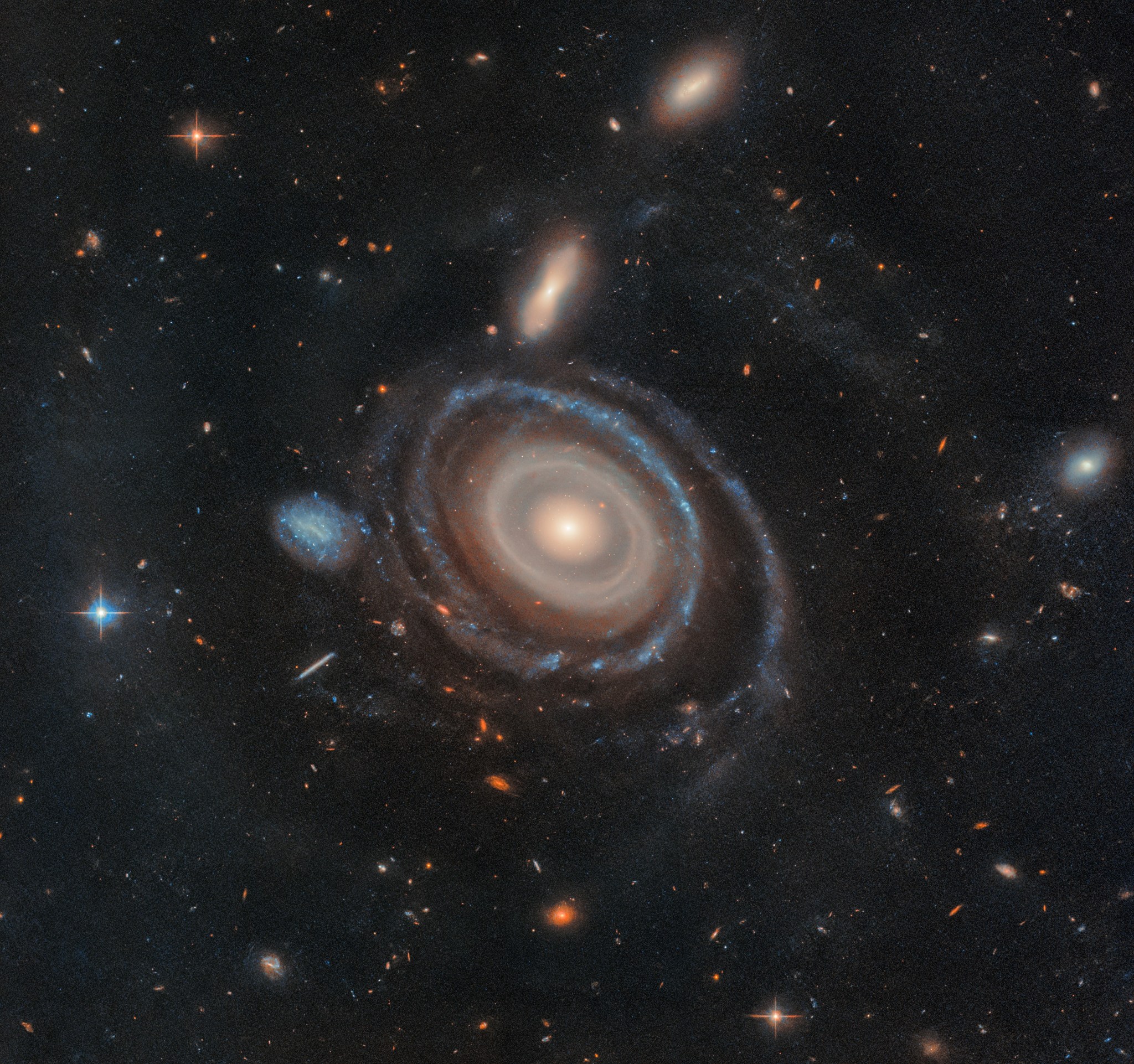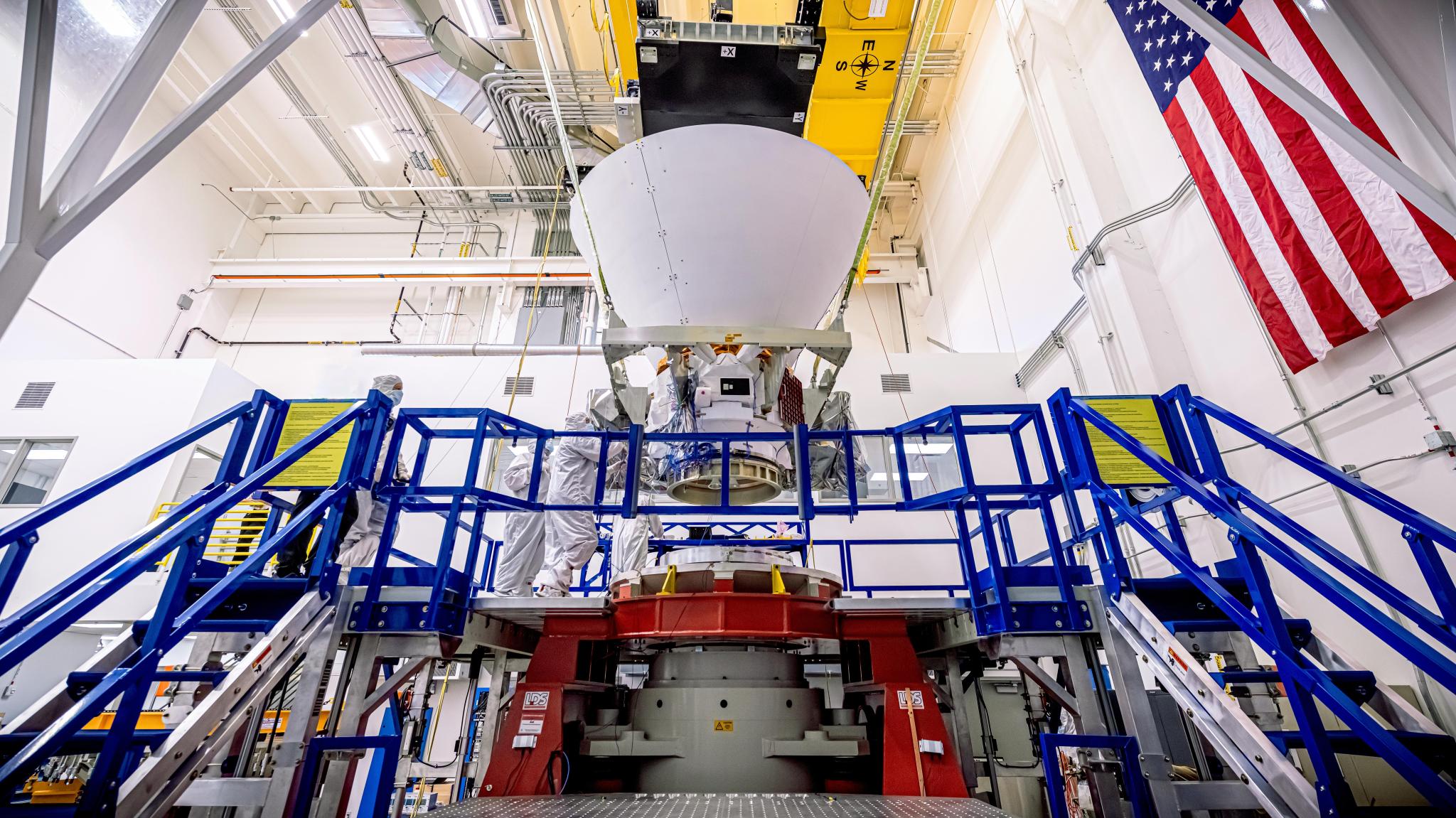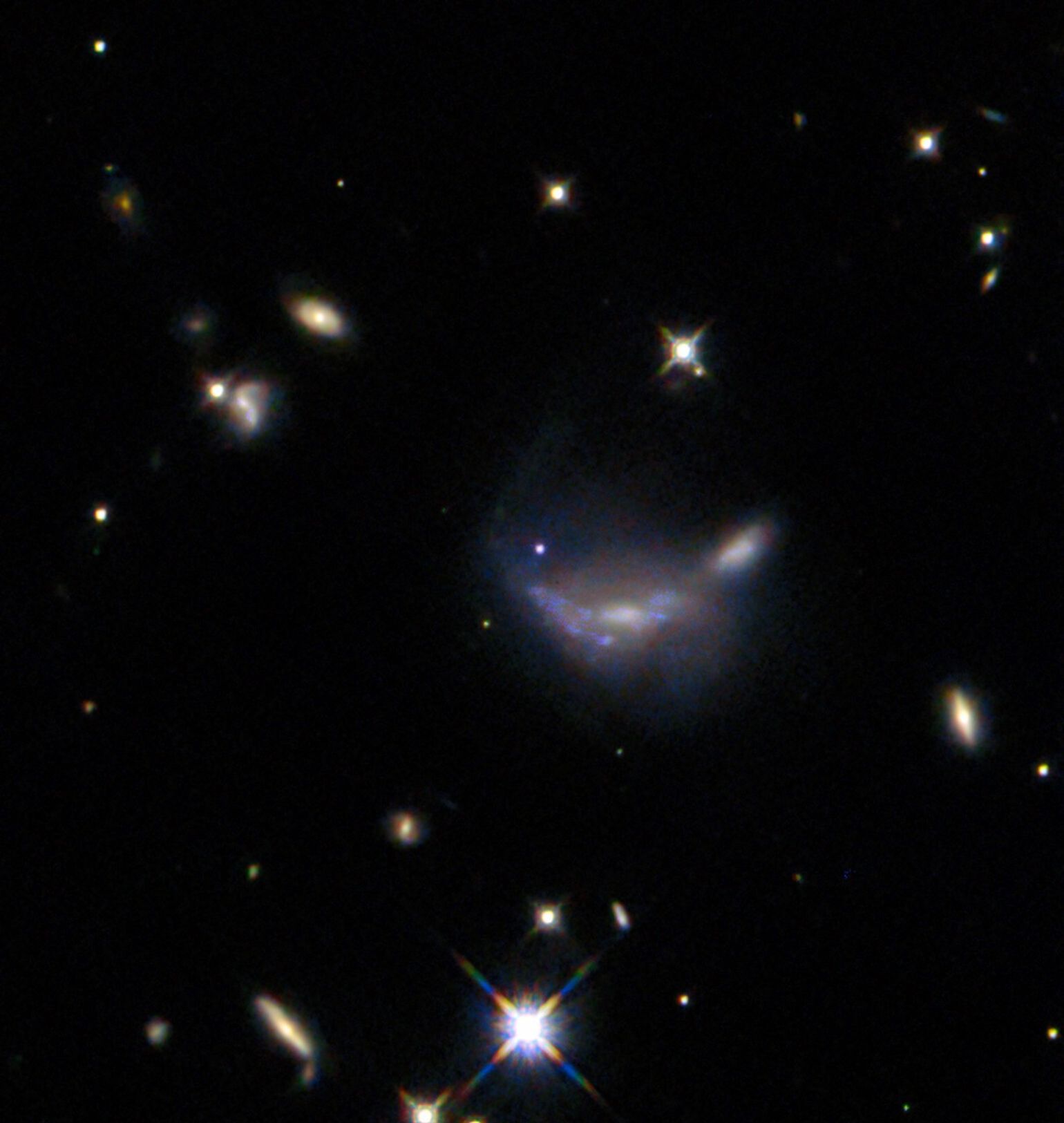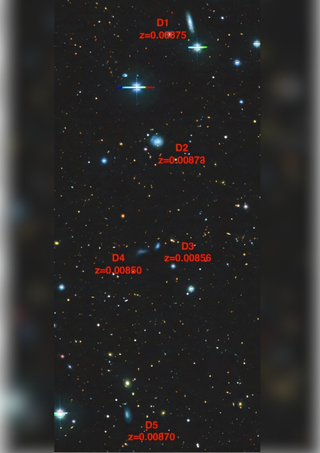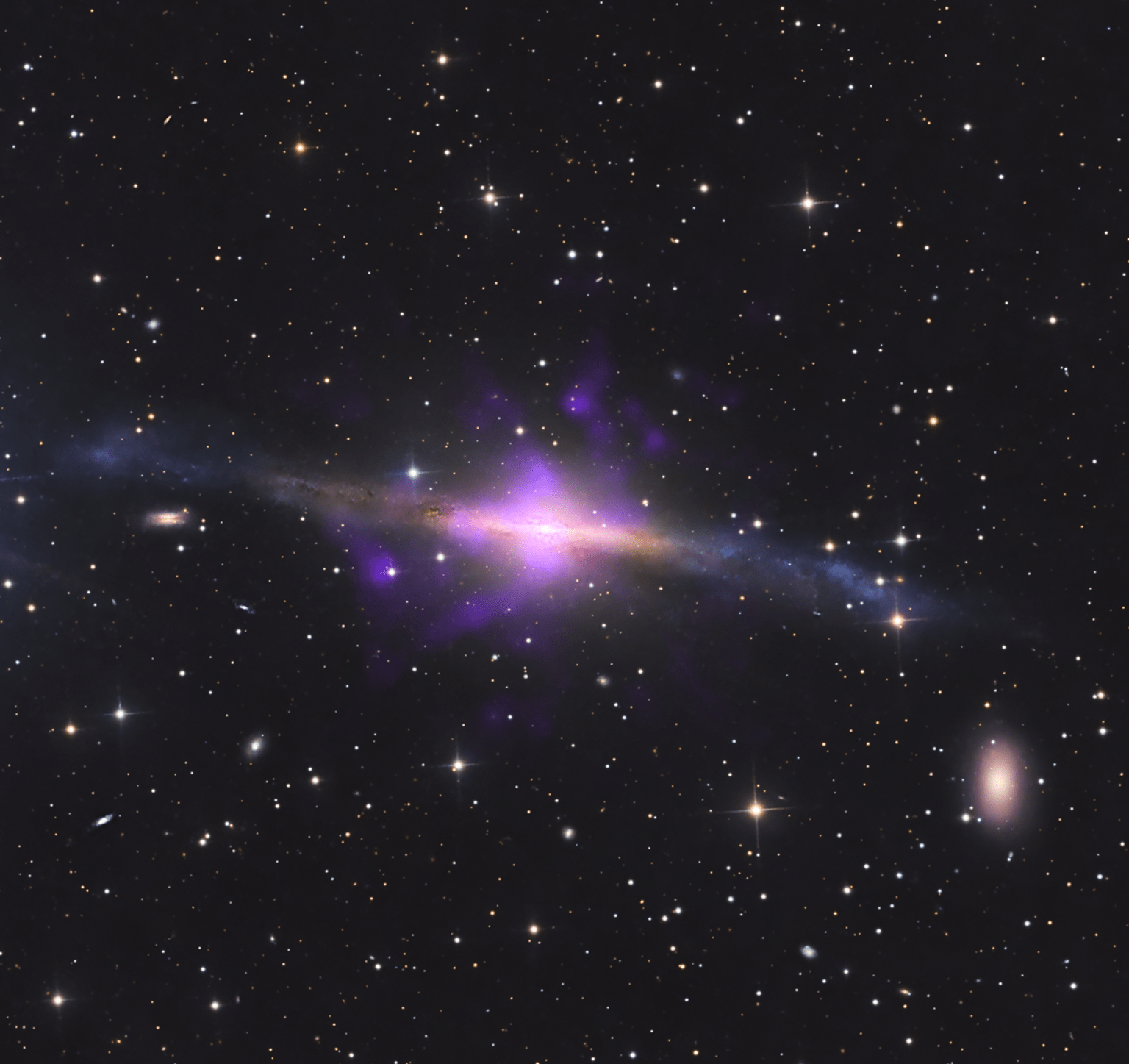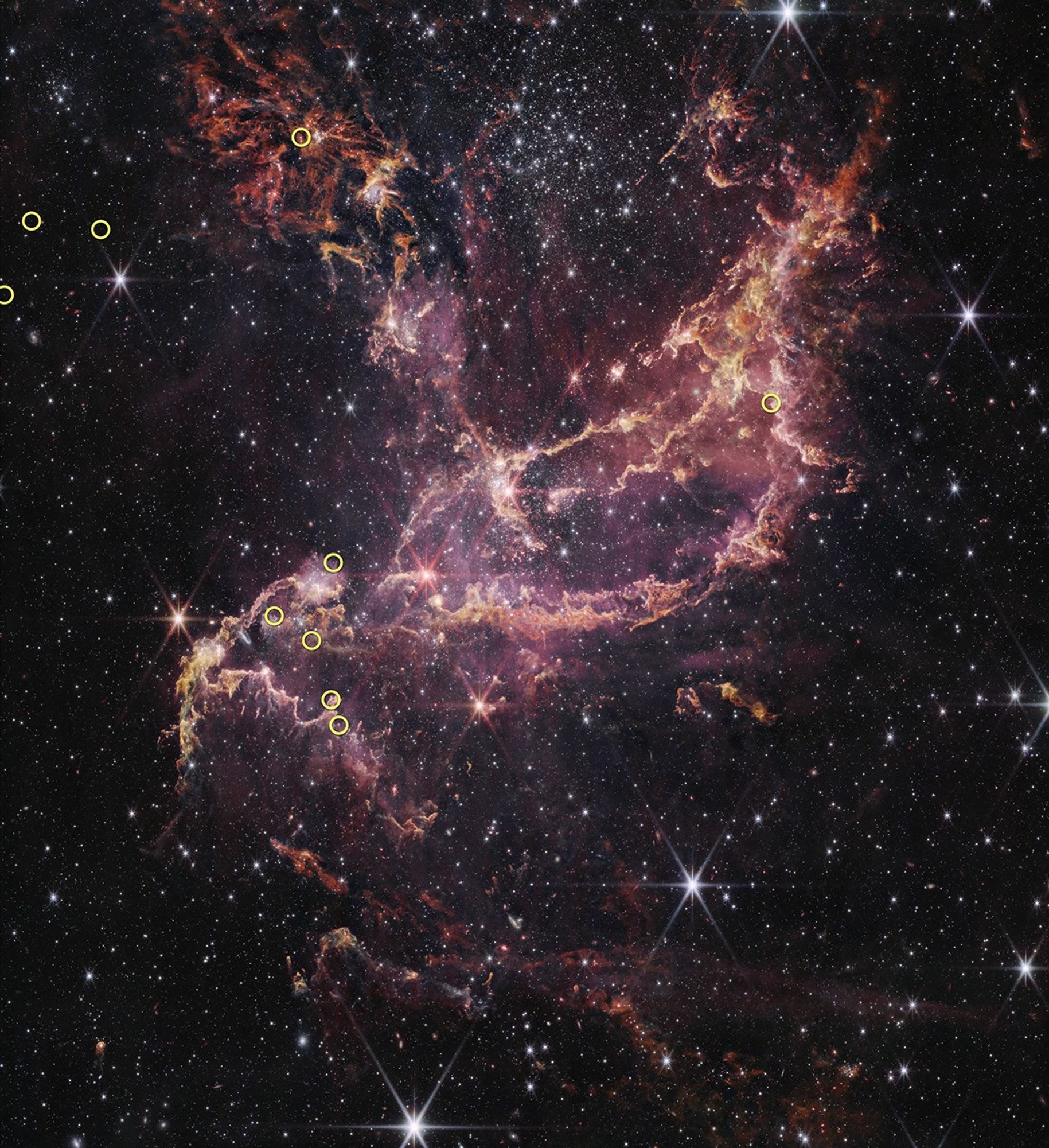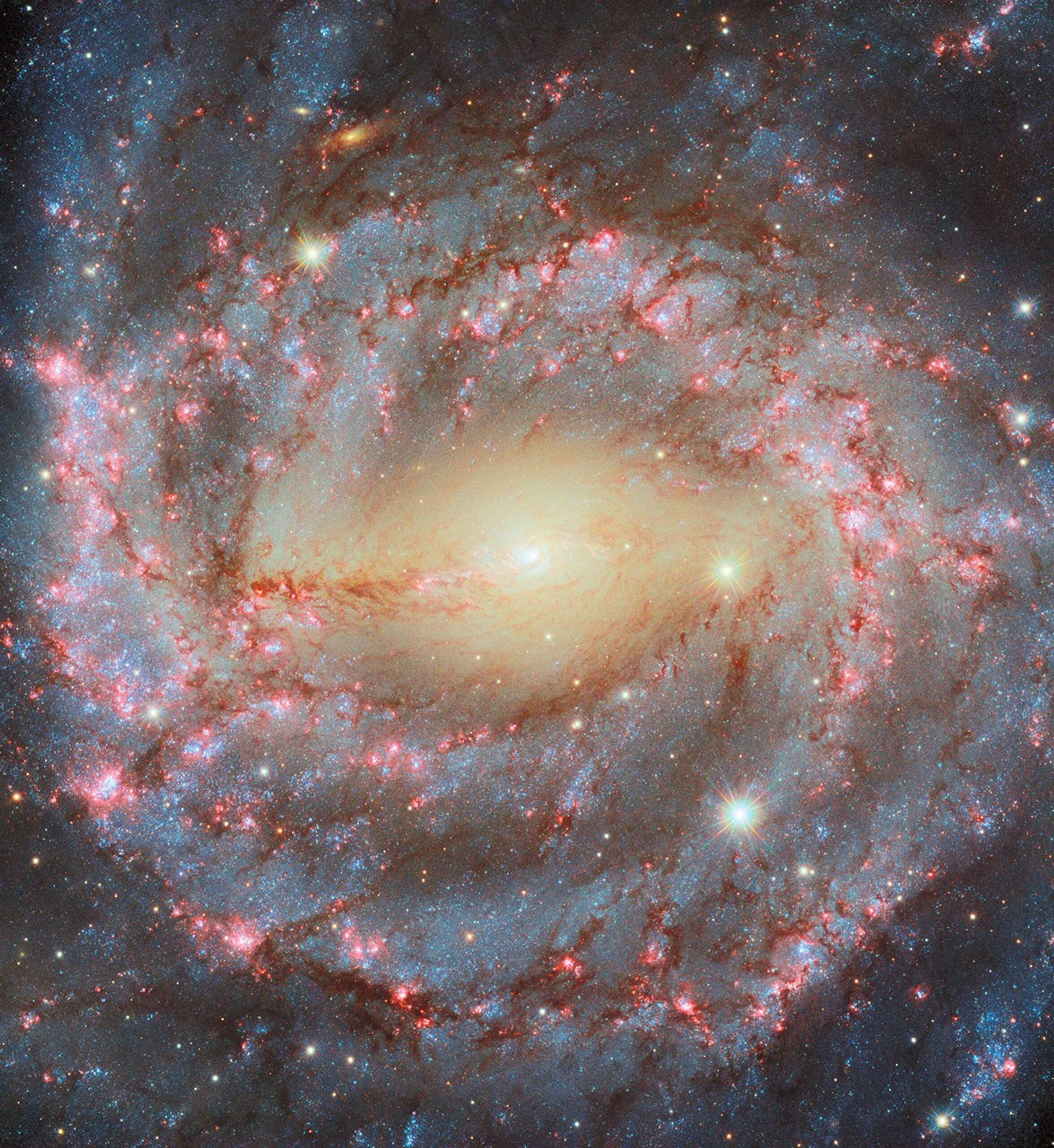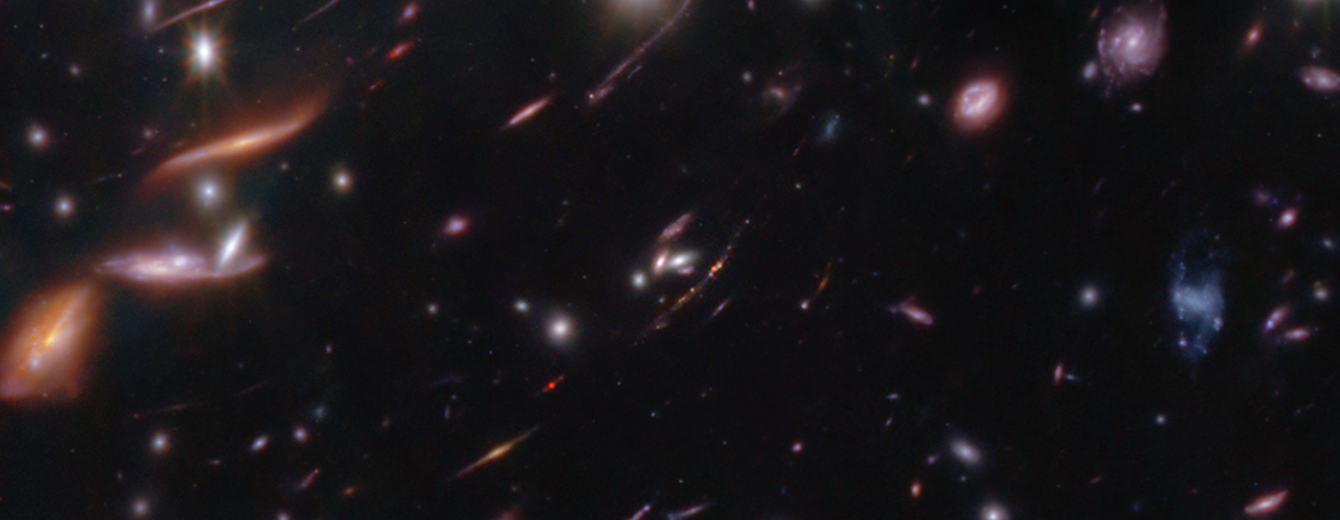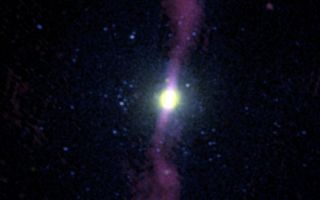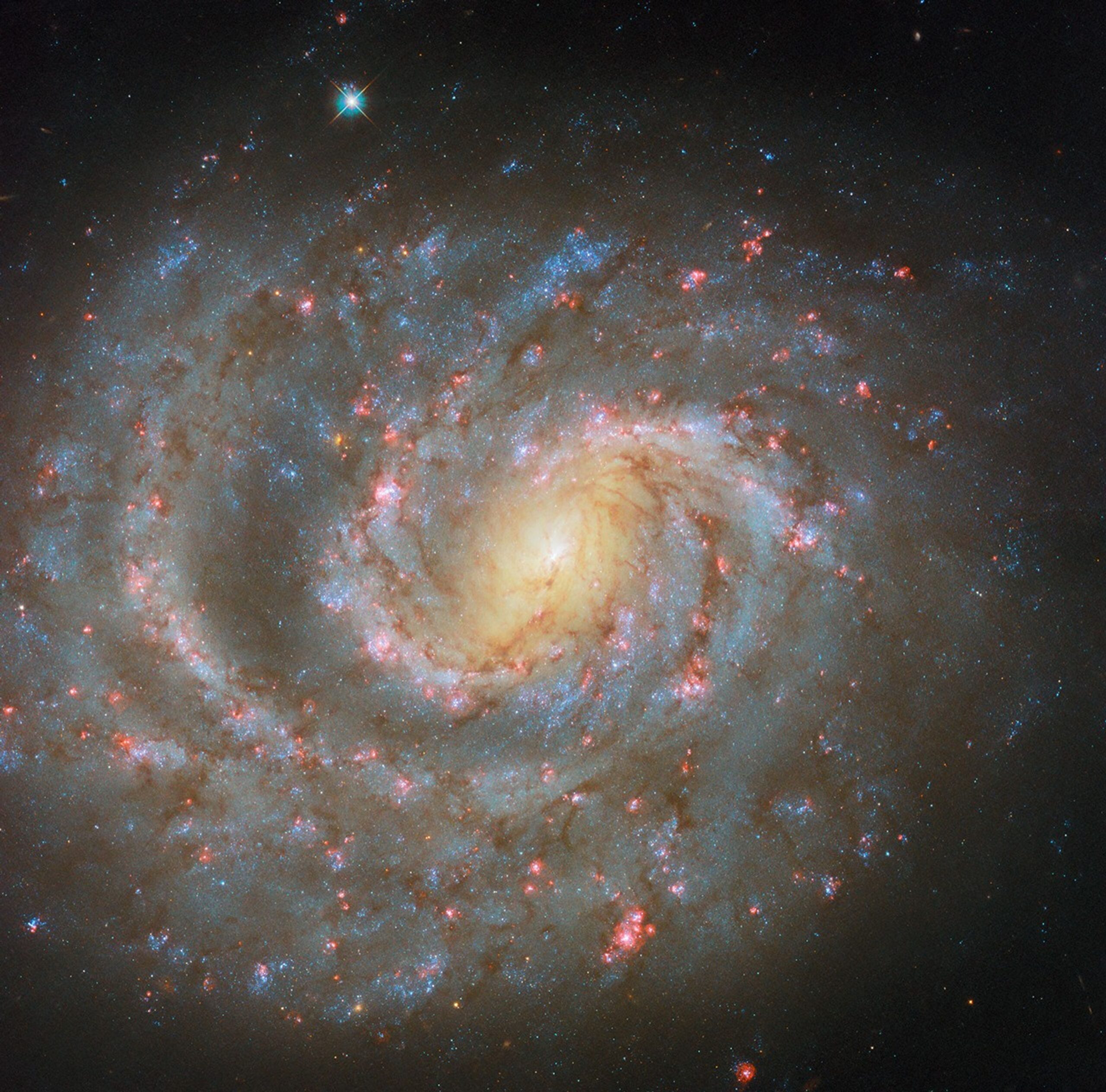NASA, ESA, CSA, and STScI This image from NASA’s Hubble Space Telescope, released on Feb. 4, 2025, shows the gargantuan galaxy LEDA 1313424, aptly nicknamed the Bullseye. A far smaller blue dwarf galaxy went through the Bullseye’s center, leaving nine star-filled rings. Astronomers using Hubble identified eight visible rings, more than previously detected by any telescope in any galaxy, and confirmed a ninth using data from the W. M. Keck Observatory in Hawaii. Previous observations of other galaxies show a maximum of two or three rings. Hubble and Keck’s follow-up observations…
Read MoreTag: Galaxies
6 Things to Know About SPHEREx, NASA’s Newest Space Telescope
5 min read Preparations for Next Moonwalk Simulations Underway (and Underwater) NASA’s SPHEREx observatory undergoes testing at BAE Systems in Boulder, Colorado, in August 2024. Launching no earlier than Feb. 27, 2025, the mission will make the first all-sky spectroscopic survey in the near-infrared, helping to answer some of the biggest questions in astrophysics. BAE Systems/NASA/JPL-Caltech Shaped like a megaphone, the upcoming mission will map the entire sky in infrared light to answer big questions about the universe. Expected to launch no earlier than Thursday, Feb. 27, from Vandenberg Space…
Read MoreHubble Spots a Supernova
Explore Hubble Hubble Home Overview About Hubble The History of Hubble Hubble Timeline Why Have a Telescope in Space? Hubble by the Numbers At the Museum FAQs Impact & Benefits Hubble’s Impact & Benefits Science Impacts Cultural Impact Technology Benefits Impact on Human Spaceflight Astro Community Impacts Science Hubble Science Science Themes Science Highlights Science Behind Discoveries Hubble’s Partners in Science Universe Uncovered Explore the Night Sky Observatory Hubble Observatory Hubble Design Mission Operations Missions to Hubble Hubble vs Webb Team Hubble Team Career Aspirations Hubble Astronauts News Hubble News…
Read MoreRare string of ‘cosmic pearls’ dance together in the universe
Astronomers have discovered a rare group of five dwarf galaxies located relatively close to Earth; these galaxies exist in a near-perfect alignment, resembling a string of cosmic pearls in the sky. Held together by their mutual gravity, several of the dwarf galaxies (designated D1 to D5) are rhythmically dancing with one another while others are engaged in a “cosmic tug of war,” ripping gas and stars away from each other. The scientists behind this discovery say these factors make this dwarf galaxy grouping particularly intriguing. The arrangement may be as…
Read MoreNASA Finds ‘Sideways’ Black Hole Using Legacy Data, New Techniques
4 Min Read NASA Finds ‘Sideways’ Black Hole Using Legacy Data, New Techniques Image showing the structure of galaxy NGC 5084, with data from the Chandra X-ray Observatory overlaid on a visible-light image of the galaxy. Chandra’s data, shown in purple, revealed four plumes of hot gas emanating from a supermassive black hole rotating “tipped over” at the galaxy’s core. Credits: X-ray: NASA/CXC, A. S. Borlaff, P. Marcum et al.; Optical full image: M. Pugh, B. Diaz; Image Processing: NASA/USRA/L. Proudfit NASA researchers have discovered a perplexing case of a black hole that appears to…
Read MoreNASA’s Webb Finds Planet-Forming Disks Lived Longer in Early Universe
Webb Webb News Latest News Latest Images Blog (offsite) Awards X (offsite – login reqd) Instagram (offsite – login reqd) Facebook (offsite- login reqd) Youtube (offsite) Overview About Who is James Webb? Fact Sheet Impacts+Benefits FAQ Science Overview and Goals Early Universe Galaxies Over Time Star Lifecycle Other Worlds Observatory Overview Launch Orbit Mirrors Sunshield Instrument: NIRCam Instrument: MIRI Instrument: NIRSpec Instrument: FGS/NIRISS Optical Telescope Element Backplane Spacecraft Bus Instrument Module Multimedia About Webb Images Images Videos What is Webb Observing? 3d Webb in 3d Solar System Podcasts Webb Image…
Read MoreHubble Images a Grand Spiral
Hubble Space Telescope Hubble Home Overview About Hubble The History of Hubble Hubble Timeline Why Have a Telescope in Space? Hubble by the Numbers At the Museum FAQs Impact & Benefits Hubble’s Impact & Benefits Science Impacts Cultural Impact Technology Benefits Impact on Human Spaceflight Astro Community Impacts Science Hubble Science Science Themes Science Highlights Science Behind Discoveries Hubble’s Partners in Science Universe Uncovered Explore the Night Sky Observatory Hubble Observatory Hubble Design Mission Operations Missions to Hubble Hubble vs Webb Team Hubble Team Career Aspirations Hubble Astronauts News Hubble…
Read MoreFound: First Actively Forming Galaxy as Lightweight as Young Milky Way
Webb Webb News Latest News Latest Images Blog (offsite) Awards X (offsite – login reqd) Instagram (offsite – login reqd) Facebook (offsite- login reqd) Youtube (offsite) Overview About Who is James Webb? Fact Sheet Impacts+Benefits FAQ Science Overview and Goals Early Universe Galaxies Over Time Star Lifecycle Other Worlds Observatory Overview Launch Orbit Mirrors Sunshield Instrument: NIRCam Instrument: MIRI Instrument: NIRSpec Instrument: FGS/NIRISS Optical Telescope Element Backplane Spacecraft Bus Instrument Module Multimedia About Webb Images Images Videos What is Webb Observing? 3d Webb in 3d Solar System Podcasts Webb Image…
Read MoreAncient cosmic collisions may have birthed the universe’s most monstrous galaxies
Astronomers have discovered that large flows of cold gas created by collisions between galaxies in the early universe may have forged some of the most monstrous star systems. The formation of ancient gigantic galaxies that bulge like footballs compared to our relatively flat spiral galaxy, the Milky Way, has confused astronomers for decades. Now, a team led by scientists from the University of Southampton may have scored a touchdown in this quest. They believe their research may finally solve this long-standing galactic puzzle. “Two disk galaxies smashing together caused gas…
Read MoreHubble Spots a Spiral in the Celestial River
Hubble Space Telescope Home Hubble Spots a Spiral in the… Hubble Space Telescope Hubble Home Overview About Hubble The History of Hubble Hubble Timeline Why Have a Telescope in Space? Hubble by the Numbers At the Museum FAQs Impact & Benefits Hubble’s Impact & Benefits Science Impacts Cultural Impact Technology Benefits Impact on Human Spaceflight Astro Community Impacts Science Hubble Science Science Themes Science Highlights Science Behind Discoveries Hubble’s Partners in Science Universe Uncovered Explore the Night Sky Observatory Hubble Observatory Hubble Design Mission Operations Missions to Hubble Hubble vs…
Read More